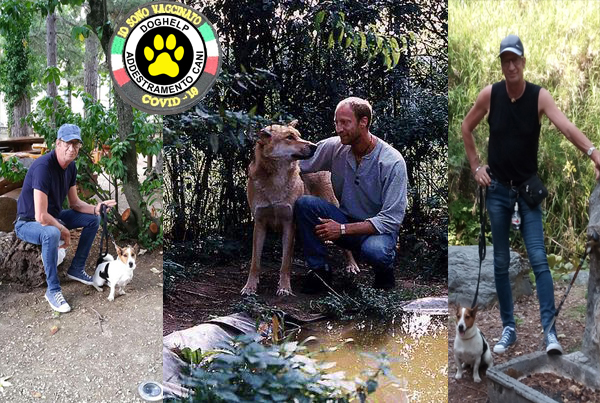Help…. my dog is knocking me down !!
I have been approached by several readers with the question whether I can help them with the problem, that the dog is pulling very strong on the leash.
This is a very common problem and also has to do with the ranking between the dog and its owner. A lower ranked animal in the pack should follow his leader. He is forbidden to walk ahead of his leader. There is a big difference between walking owners with their dogs, who have previously followed a dog course with the animal or owners who have let their dogs go their own way. When the dog becomes mature and stronger, this can lead to dangerous situations.
Once I have trained a small lady with a large robust Labrador Retriever privately, after she was pulled on a busy and dangerous street by her dog. After three weeks of training, she was ready to fully control her dog while walking in the street.
When the dog pulls strongly on the leash, there is the method to try to claim his attention with his favorite toy. He has to turn back around in your direction, then just enthusiastically play with him. You must always repeat this. Also learn to recognize on the dog at what time he is going to pull. Try to avoid pulling the dog by going immediately into playing at the moment you think he will give a jerk at the leash.
Unfortunately, the stimulus that the dog causes to pull at the leash is often too strong to immediately distract him with a toy.

When an over-enthusiastic dog sees a cat, a passing cyclist or another dog on the other side of the street, the animal develops an enormous energy.
Another method is to walk with the dog in a somewhat quieter environment. Every time he pulls at the leash or when he is so ahead of you that the leash becomes tighter, you should immediately turn the dog 180 degrees into your direction. You have to force the animal in the opposite direction, time after time. When he turns into your direction (with your help), you reward him with a friendly voice. You must continue to carry out this exercise consistently. It may even be that the first few times you cannot walk 10 meters further, because you had to keep going the other way again and again, when the dog pulled the leash, but you will have good result with this exercise.
The “trick” of this exercise is that you get the dog out of its orientation. By turning the animal back and forth in the opposite direction, he loses his orientation. After some time he will pay more attention to you, because he is uncertain in which direction to walk and will follow you as a leader. Do you have a stiff and stubborn dog, then you can pull the dog with some force turned in your direction, immediately when the leash goes tight.
When the dog starts to respond, I advise you to teach the animal the “FOLLOW” command. When he starts to keep an eye on you and keeps walking closer to you, you can give the command “FOLLOW” to the dog. Use his toy again to keep his attention. You also have to talk to him constantly. Force the dog to Keep constantly paying attention to you in this way. At times when he is walking right next to you, you will reward him with your voice. It is also important to interrupt the exercises regularly with a fun tug-of-war game with the dog and his toy.
When you challenge the dog to play, you also ensure that he has to turn completely in your direction first. He must follow you under all circumstances, regardless of whether it is during running, walking or playing.
It is also important that you, among other things, apply some extra rules at home. For example…. the dog may no longer walk in front of you through an open door. He has to wait until you, his leader, are the first to go through the doorway and only after he is allowed to pass.
If you open the door for a visitor, the dog has to sit down and he may greet the visit only when you give him the command to do so.
By consistently and continuously applying the above exercises, you will notice that your dog will no longer be pulling the leash within a few weeks and the animal will also pay attention to you and listen to you in a short time.
GOOD LUCK !!!
Do you have questions regarding this article or do you need advice regarding other situations, then I am happy to help you !!!



